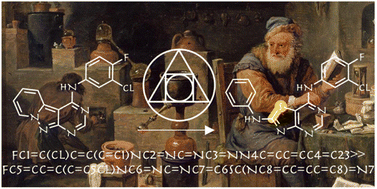Digital Discovery, 2023, 2,1471-1483
DOI: 10.1039/D3DD00105A, Paper
DOI: 10.1039/D3DD00105A, Paper
 Open Access
Open Access This article is licensed under a Creative Commons Attribution-NonCommercial 3.0 Unported Licence.
This article is licensed under a Creative Commons Attribution-NonCommercial 3.0 Unported Licence.Kiran Vaddi, Karen Li, Lilo D. Pozzo
We present an automated method to extract phase maps from experimental data that is of the functional form (e.g.: spectroscopy, scattering, diffraction) using the notion of shape distance between two curves represented as one dimensional functions.
The content of this RSS Feed (c) The Royal Society of Chemistry
We present an automated method to extract phase maps from experimental data that is of the functional form (e.g.: spectroscopy, scattering, diffraction) using the notion of shape distance between two curves represented as one dimensional functions.
The content of this RSS Feed (c) The Royal Society of Chemistry











